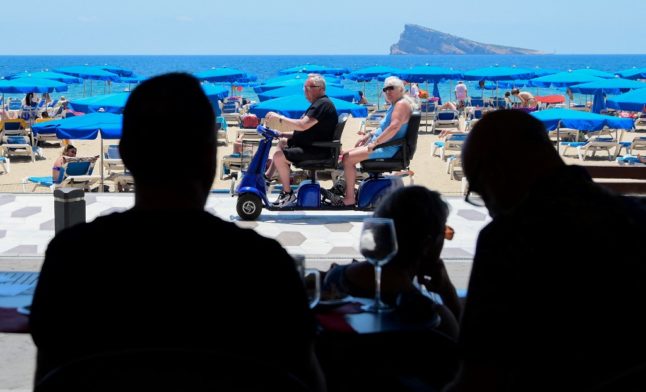The famous 13th-century black-and-white striped cathedral has opened a series of spiral staircases and covered internal walkways to the public – all some 15 metres (49 feet) from the marble floor.
Visitors climbing up can peep down through small windows onto the mediaeval and Renaissance mosaics showing biblical scenes which line the nave and transepts and the golden stars of the ceiling.
"The roof of Siena Cathedral had never been considered a place that could be suitable for tourists," Mario Lorenzoni, curator of Siena Cathedral, told AFP.
"We went up into the lofts to clean them and it was a mammoth task! And while we were there, we realized that the roof could offer amazing things," he said.
Beyond the covered walkways, open only to 15 people at a time, is another succession of spiral steps leading to the cathedral's parapet, and a view across the red-tiled roofs of Siena.
Hidden from sight from tourists below admiring the cathedral's collection of art works by Bernini, Donatello and Michelangelo, navigating the passages is like being back-stage in a theatre.
Here, poised between earth and sky, the methods and technical challenges involved in building the cathedral, which was designed and completed by 1263, are laid bare.
The idea is to give visitors a glimpse of what it takes to raise from marble blocks a towering house of prayer, decorated both inside and out in the city's black and white stripes in a reference to the colours of the horses ridden by the city's founders, Senius and Aschius.
"How did they raise the tonnes of marble? How did the sculptors work? How did the architects explain to them what they had in mind?" said Lorenzoni, outlining some of the concepts tackled.
"On the one hand there is the visual aspect, with sublime views, and on the other there's the more technical aspect – no less moving – on how the works of art which we so love today were made," he said.
The walkways were opened to the public in collaboration with the town's religious authorities, headed up by Archbishop Antonio Buoncristiani.
"In a town which was fundamentally poor, it was possible to build extraordinary monuments, of an indescribable beauty. How? Because they had a sense of the common good," he said.
"I think that the most important aspect of the visit is to understand what the cathedral construction site meant, how it mobilized the whole town," he added.
While scaling the steps to the hidden pathways may bring some closer to heaven, the experience is not for the faint of heart.
It is "a fascinating experience, but of course not for everyone: an elderly person is not going to climb that spiral staircase!" the 69-year-old archbishop said.
The walkways are open to the public until October 27th, and visitors must reserve tickets in advance.



 Please whitelist us to continue reading.
Please whitelist us to continue reading.
Member comments